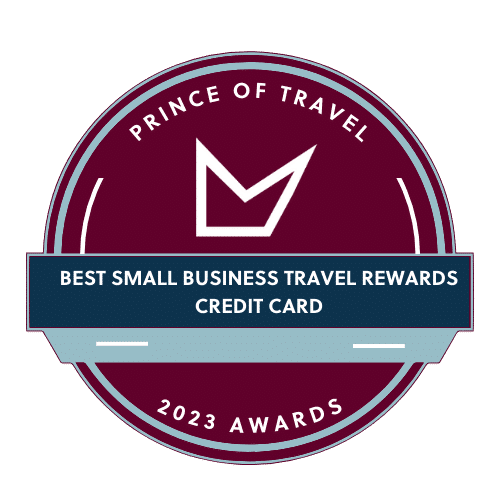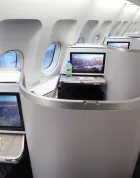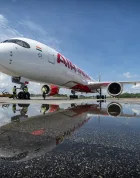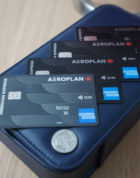As the busy holiday travel season already upon us, it’s important to save time at the airport whenever you possibly can.
While NEXUS processing has largely gone back to normal, the waiting time for a conditional approval is still quite long. Many travellers without a membership, or waiting for one, remain stuck in regular passport control lines.
Fortunately, US Customs and Border Protection (CBP) has introduced Mobile Passport Control to Canadian pre-clearance locations and many US airports and seaports. With the app, inbound passengers can submit information prior to their arrival and have access to a separate line, which ultimately expedites their entry into the country.
While using this app is entirely optional, it’s a quick and free way that may save you time at the border.
In This Post
- What Is Mobile Passport Control?
- Where Can You Use Mobile Passport Control?
- How to Use Mobile Passport Control
- Conclusion
What Is Mobile Passport Control?
Mobile Passport Control (MPC) is a free app from United States Customs and Border Protection. The app lets users upload information in advance, which ultimately speeds up their processing time when crossing into the United States.
Using the application, travellers can upload their passport information, answer a few questions about their trip, and take a selfie.
Once the information is sent, a QR code is generated that is valid for four hours. At the airport, you simply present your passport(s) and the QR code to the border officer, who then processes your entry as per usual.
By simply filling in your information in advance and answering a few CBP inspection-related questions, you get to join an express line and spend less time facing a CBP officer.
A single submission can be made for all members of a family travelling together, which makes the process less cumbersome and more convenient for everyone.

To be clear, MPC isn’t a trusted traveller program like NEXUS or Global Entry, as trusted travellers are still processed separately at US borders. Furthermore, it doesn’t provide any benefit at security lines like TSA PreCheck does; however, you can also look at the Express program to save time at five major Canadian airports.
Some early data points from community members suggest that the Mobile Passport Control line is much shorter than the regular lines. If you’re waiting on a pending NEXUS application, or if you can’t be bothered to apply, then this is a free option that saves you time at the airport.
Note that only US citizens, US permanent residents, Canadians entering the United States on a B1 or B2 visa, and Visa Waiver Program travellers with approved ESTA can use Mobile Passport Control. This includes temporary entry for tourism and business, so it should be applicable to many travellers heading to the United States.
Where Can You Use Mobile Passport Control?
In total, there are 48 airports and seaports in the United States and Canada where Mobile Passport Control may be used. These include:
- Atlanta Hartsfield-Jackson International Airport (ATL)
- Aruba Queen Beatrix International Airport (AUA)
- Bermuda L.F. Wade International Airport (BDA)
- Baltimore/Washington International Thurgood Marshall Airport (BWI)
- Boston Logan International Airport (BOS)
- Calgary International Airport (YYC)
- Charlotte Douglas International Airport (CLT)
- Chicago O’Hare International Airport (ORD)
- Dallas/Fort Worth International Airport (DFW)
- Denver International Airport (DEN)
- Edmonton International Airport (YEG)
- Dulles International Airport (IAD)
- Fort Lauderdale-Hollywood International Airport (FLL)
- Halifax Stanfield International Airport (YHZ)
- Honolulu Daniel K. Inouye International Airport (HNL)
- Houston George Bush Intercontinental Airport (IAH)
- Houston William P. Hobby International Airport (HOU)
- John F. Kennedy International Airport (JFK)
- Kansas City International Airport (MCI)
- Las Vegas Harry Ried International Airport (LAS)
- Los Angeles International Airport (LAX)
- Miami International Airport (MIA)
- Miami Seaport
- Minneapolis-Saint Paul International Airport (MSP)
- Montreal Trudeau International Airport (YUL)
- Nassau Lynden Pindling International Airport (NAS)
- Newark Liberty International Airport (EWR)
- Oakland International Airport (OAK)
- Orlando International Airport (MCO)
- Ottawa International Airport (YOW)
- Palm Beach Seaport
- Philadelphia International Airport (PHL)
- Phoenix Sky Harbor International Airport (PHX)
- Pittsburgh International Airport (PIT)
- Port Everglades Seaport
- Portland International Airport (PDX)
- Sacramento International Airport (SMF)
- Salt Lake City International Airport (SLC)
- San Diego International Airport (SAN)
- San Francisco International Airport (SFO)
- San Jose International Airport (SJC)
- San Juan Airport (SJU)
- San Juan Seaport
- Seattle-Tacoma International Airport (SEA)
- Tampa International Airport (TPA)
- Toronto Pearson International Airport (YYZ)
- Vancouver International Airport (YVR)
- Winnipeg James A Richardson International Airport (YWG)
It’s worth noting that in Vancouver and Calgary, you can also use Express to pre-book a time to go through transborder security. By using Express and MPC, you’ll streamline your way into the US, giving you more time to relax before your flight.
It’s expected that Express will be available at transborder security lines in other Canadian airports in the near future.
How to Use Mobile Passport Control
Using Mobile Passport Control is quite easy, and it can be broken down into four steps:
Step 1: Download the App
The app is available from Google Play and the Apple App Store.
Step 2: Create a Profile
Once the app is installed, simply create a profile for each member of your household in the app. This step isn’t necessary, but it will speed up the process of generating a QR code, as you won’t have to enter in your information every time.
You can store information for up to 12 travellers from the same household in the app.

Step 3: Fill In the CBP Form & Take a Selfie
On the main screen, enter in the details for your entry. You’ll need to fill in the method of entry (by air or by boat), as well as the port of entry.

You’ll be asked to fill in standard information about yourself, and answer a few questions about your trip. You’ll also have to take a picture of each passenger travelling with you, which you can do with the app and your device’s camera.

Once all the information is successfully entered, a QR code will be generated. You can find it in the “Receipt” tab on the app’s home page.

Step 4: Present the QR Code at the Border
At the airport, keep an eye out for an expedited Mobile Passport Control lane. If one is available, you can bypass the regular line, which could result in saving you a bunch of time.
At the border, present your passport(s) and the QR code from the app. The border officer will process your entry as per usual, but the process should be faster than if you were to go through the regular process.
Of course, it won’t help you if you’ve been tagged for Secondary Security Screening Selection. If that’s the case, hopefully you’ve arrived well in advance of your flight’s departure.
Conclusion
With many NEXUS applications still in limbo, you can use Mobile Passport Control in the meantime to shorten your wait at US entry points.
While it’s not as beneficial as trusted traveller programs, you still get to join an express line, bypassing the long, snaking queues that are often present at US border clearance points. At some Canadian airports, you can also use Express to pre-book your time at transborder security, which speeds up your entry even more.
The service is completely free and doesn’t require pre-approval. It’s also easy to sign up for and use, so make sure you install it before your next trip to the US.





















Can I use it? I am Irish and traveling to JFK in March. I am traveling from Dublin to London Heathrow and London Heathrow to JFK NYC